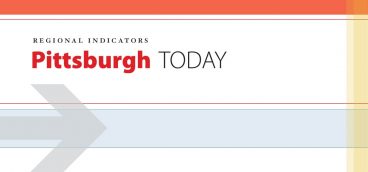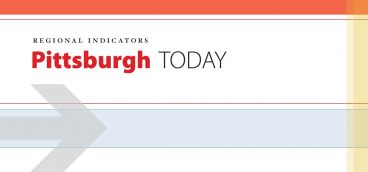
This column is the first public glimpse of a project that will yield a great deal of information and understanding of who we are as residents of this region, what we do and how we view our region.
This major new survey was conducted by Pittsburgh Today and our colleagues at Pitt’s University Center for Social and Urban Research. The result of investment by the university and by Pittsburgh Today (through major local foundations), the survey is likely the most significant such project to be done in this region since the famed Pittsburgh Survey over 100 years ago.
What follows are a few of the survey’s preliminary results. As the research is finished and analyzed, expect a great many more reports on the findings throughout the local news media. We’ll be able to compare responses between residents of Allegheny County, the seven-county metropolitan statistical area and the 32-county Power of 32 region. We also will be able to compare results based on such differences as sex, age, race and neighborhood. For now though, here are some of the broad strokes.
Over the last few years, quality of life improved in the opinion of only 17.1 percent of residents; 45.6 percent say it stayed the same, but 37.4 percent said quality of life here has declined. And the farther we live from Allegheny County—the center of the region—the worse our perception of regional quality of life. (See figure 1.)
In the environment, a very heavy majority of regional residents don’t see air quality as being a significant problem, despite the readings that show this region routinely to be among the worst in the nation for fine particulate matter. Air quality is “not a problem at all” to 53.1 percent, a minor problem to 28.4 percent, a moderate problem to 13.4 percent and a severe problem to just 4.1 percent.
With this survey taking place just before the major air quality campaign spearheaded this fall by The Heinz Endowments, the results of our survey could serve as a fascinating baseline if followed, for instance, by an environmental survey taken after The Heinz Endowments program. Such is part of the value of survey work—to repeat them over time to gauge change.
Compared with air quality, pollution in our streams and rivers is seen as a greater problem. While a majority still see such pollution as no big deal, it’s a narrower majority: 30.4 percent say pollution in streams and rivers is not a problem at all; 32.2 percent see it as a minor problem; 22.6 percent as a moderate problem; and 9.7 percent see pollution in streams and rivers as a severe problem.
Let’s look at the Marcellus Shale. Much more information will be available shortly, but here are a couple findings. To what degree do residents view the Marcellus as an economic opportunity? Some 35.2 percent see it as a significant economic opportunity; for 34.3 percent, it’s a moderate opportunity; for 19.8 percent, the opportunity is slight; and 10.7 percent see “very little or no opportunity.”
Is the Marcellus a threat to public health and the environment? It’s a significant threat to 22.3 percent, a moderate threat to 33 percent, a slight threat to 28.1 percent and very little or no threat to 16.1 percent.
We also asked: “Considering everything, how do you feel about natural gas extraction from the Marcellus Shale?” Only 10.3 percent “strongly oppose”; 15.7 percent “somewhat oppose”; 30.3 percent neither oppose not support; 23.9 percent somewhat support; and 19.7 percent strongly support. Still, residents want their state government to keep a closer eye on the environment. Specifically, 25.1 percent want to see state oversight of the environment increase significantly; 33.1 percent want oversight to increase somewhat; 23.7 percent prefer no change; 10.8 percent want state environmental oversight to decrease somewhat; and 7.3 want a significant decrease.
In an era of tight budgets for public spending, we asked people to consider several key functions of government and whether they would like to see spending increase, decline or stay the same in each. Not surprisingly, there was more fervor to increase spending in general than to reduce it. But the public support for the various governmental areas is visible in the percentages that favor spending increases in each. For instance, increasing government spending on economic development and job creation was favored by 69.8 percent; more spending on roads and infrastructure attracted 55.6 percent; and more school spending was favored by 53.5 percent. Spending increases were favored for the remaining areas as indicated: human services (34.9 percent), public safety (33.7 percent) and parks and recreation (25.6 percent).
We asked whether people would support merging their municipality with a neighboring municipality; the responses were roughly even on either side.
Politically, the results show a regional populace that’s 42.4 percent Democratic, 26.4 percent Republican and 23.6 Independent; 21 percent are liberal, while 38.5 percent are conservative and 40.4 percent are moderate.
We are a people who are very involved in doing arts activities, and also in supporting them. Nearly 40 percent reported making recent donations to, or volunteering for, arts and cultural organizations. And arts education in schools is a core belief in this region, whether in Allegheny County or the outer counties: 24.1 percent said arts education in schools was extremely important; 44.3 said it was very important; 27.9 said it was somewhat important; and just 3.8 percent said it was not important.
Road and bridge quality is the biggest regional transportation problem, with 26.9 percent seeing it as a severe problem and 40.9 percent calling it a moderate problem. Almost exactly 50 percent see the availability of public transit as either a severe or moderate problem. Six percent use public transit five or more days a week; 4.5 percent use it at least once a week; and 3.9 percent use it at least once a month. Conversely, 55.4 percent never use public transit, and 16.4 percent say it’s not available.
How adequate or inadequate are the resources available to public schools in your local community? For 15.7 percent, the answer is completely adequate. Others said generally adequate (48.5 percent), generally inadequate (28.7 percent) and completely inadequate (8.8 percent). And likely significant to those opinions was that only 29.9 percent have children under the age of 18 living with them; 70.1 percent of households do not.
We asked: “If education funding had to be reduced, which of the following would you favor reducing?” The answers are: after-school athletics (38.3 percent); buildings and facilities (26.5 percent); transportation (16.2 percent); teachers and administrators (19.0 percent).
Would you support merging your school district with any neighboring district? Forty-seven percent say yes; 53 percent say no.
Do you support reduced incarceration of non-violent offenders in order to reduce costs? For 72.4 percent, the answer is yes, compared with 27.6 percent saying no.
In general, people reported being pretty well satisfied with their lives here. (See figure 2). And that’s a good thing because, as a people we don’t seem terribly likely to change things. Eighty percent of adults have lived in this region for more than 20 years, and 90 percent have lived here for 10 years or more. Some 34.4 percent have lived in their current house for more than 20 years. Not surprisingly, 80 percent of us expect to live here five years from now.
We have a favorable opinion of quality of life in this region: 14.5 percent consider it to be excellent; 36.9 percent say it’s very good; 29.5 say it’s good; 13.9 view it as only fair; and 4.9 percent say regional quality of life is poor.
Seventy-nine percent of adults surveyed own the place where they live; 19.4 percent rent.
How often does your household have difficulty paying for basic necessities such as rent, mortgage, food or utilities? Never, according to 53.3 percent; rarely, according to 20.6 percent; 5 percent say often; and 4.2 percent always.
We’re not optimists regarding the broader economy in the short-term. And our expectations for the national economy over the next year are lower than our expectations over the same period for the regional economy. Expectations are (national, with regional in parentheses): much better, 2.4 percent (3.0 percent); somewhat better, 21.5 percent (20.3 percent); stay the same, 27.9 percent (44.9 percent); somewhat worse, 31 percent (23.4 percent); and much worse, 17.1 percent (8.4 percent).
We view our individual prospects over the next year more optimistically: much better, 6.8 percent; somewhat better, 25 percent; stay the same, 54.1 percent; somewhat worse, 11.6 percent; and much worse, 2.5 percent. In terms of employment, 46.8 percent of us are in the private sector, 39.9 percent are in the public sector, with 13.2 percent in nonprofits. The self-employed account for 21.2 percent of our ranks, while 78.8 percent work for someone else. The union/non-union breakdown is 15.8 percent to 84.2 percent. For more information on this survey and for a variety of journalistic reports on key issues affecting Greater Pittsburgh, please visit pittsburghtoday.org.




